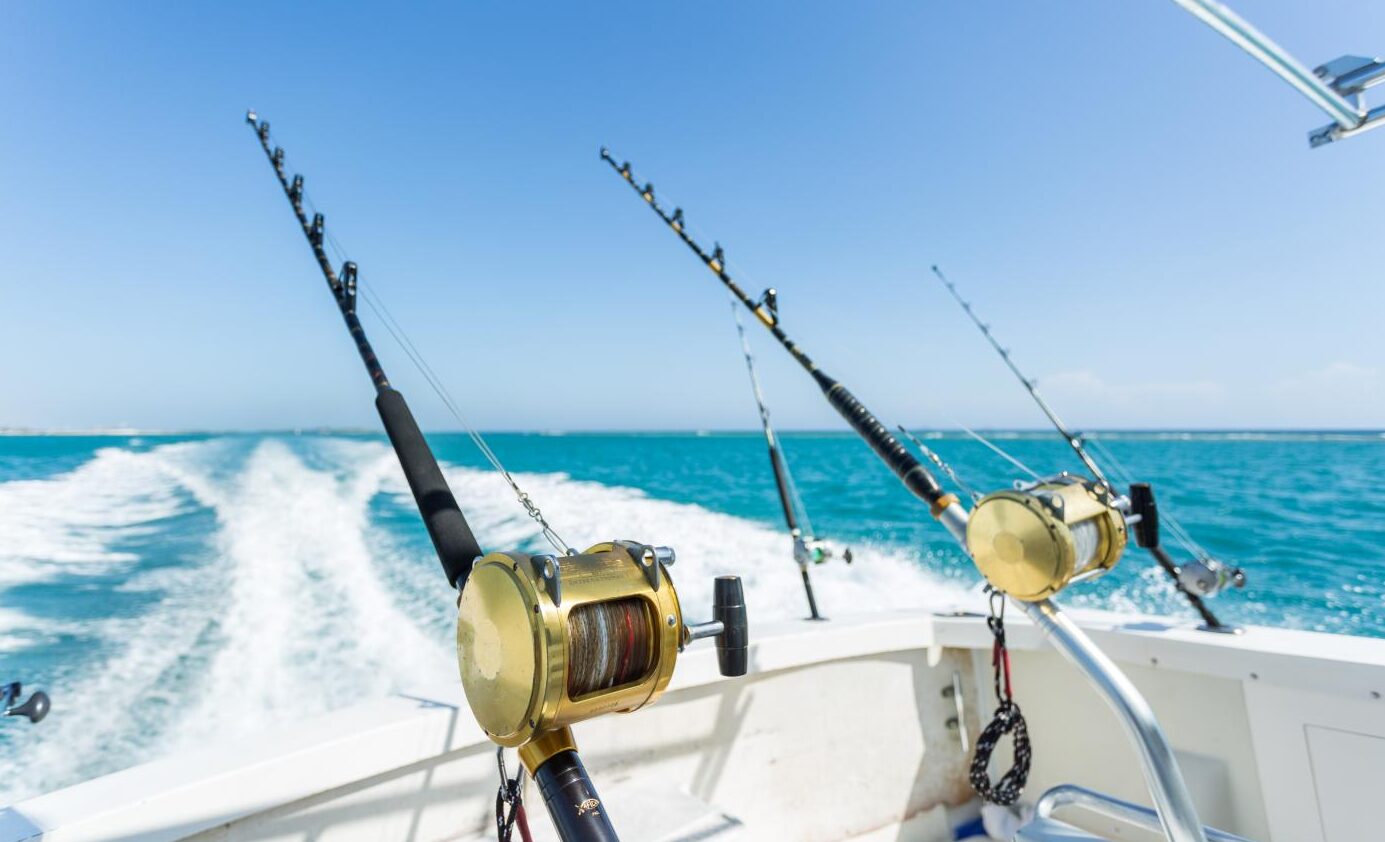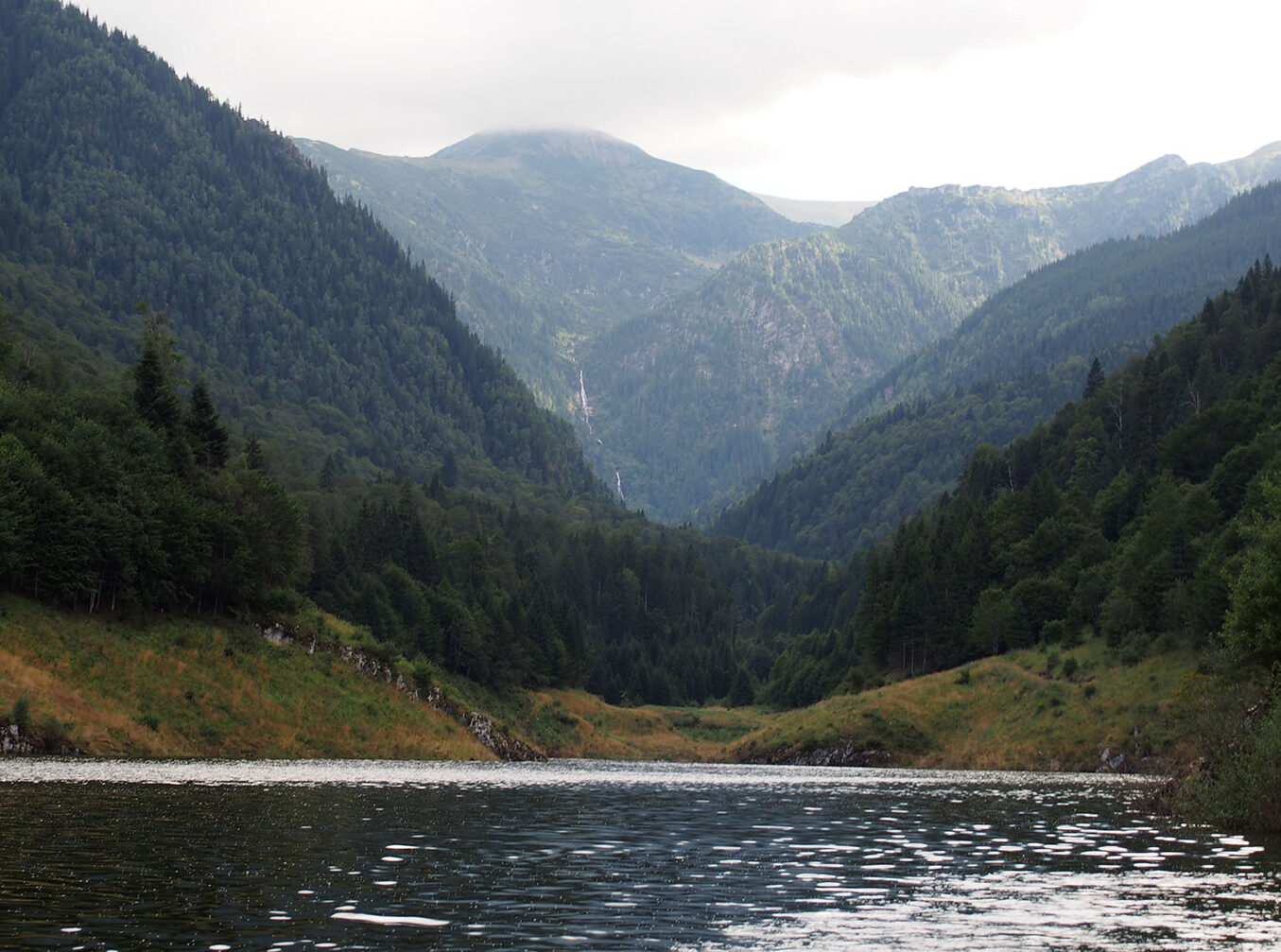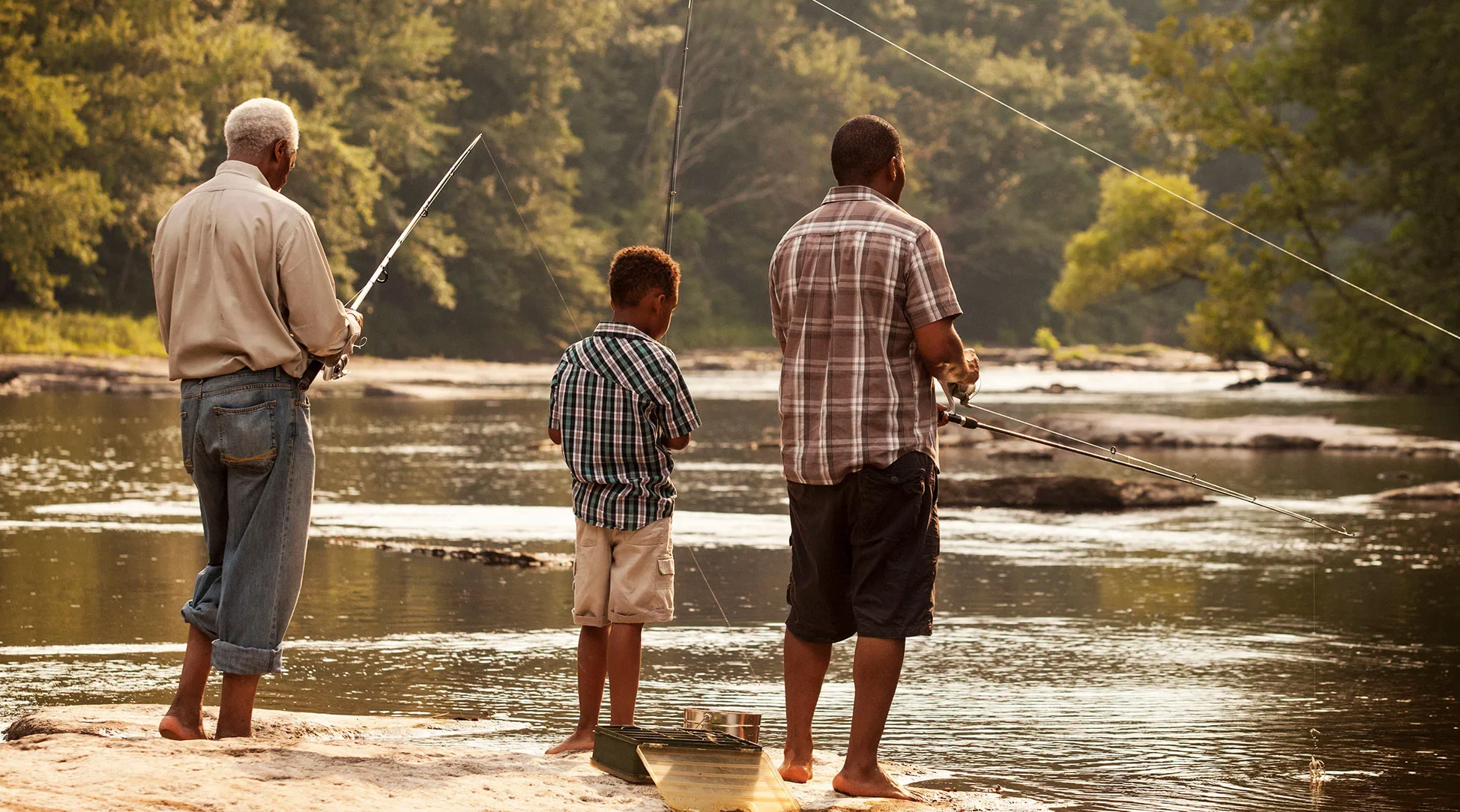Offshore trolling is a popular fishing technique used to catch a variety of gamefish, including king mackerel, mahi-mahi, tuna, and marlin. In a nutshell, trolling involves dragging a hooked lure or bait through the water from a moving boat. This technique requires specialized equipment, including trolling rods, reels, and lures, to effectively target offshore gamefish. Trolling can be done at varying speeds, depending on the target species and water conditions.
There are several reasons why offshore trolling is a preferred method for many anglers. First, trolling allows anglers to cover a large area of water in a relatively short amount of time, increasing their chances of encountering active fish. Second, trolling allows anglers to present their lures or baits at a variety of depths, from surface to deep water, which can be particularly effective when targeting pelagic species like tuna and marlin. Finally, trolling can be a fun and exciting way to catch fish, as anglers often experience explosive strikes and long, thrilling fights.
Offshore trolling can yield a variety of fish species, including mahi-mahi, tuna, and marlin. When targeting mahi-mahi, anglers often use brightly colored lures and baits, and troll at moderate speeds. Tuna can be caught using a variety of trolling techniques, including using a mix of lures and baits, and trolling at varying speeds. Marlin are typically caught using larger lures and baits, and are often targeted in areas with good visibility, such as calm seas. Successful trolling for any species requires careful rigging of lures and baits, as well as paying close attention to boat speed and presentation.
Trolling Techniques for Hooking Marlin
Trolling is a popular technique used to catch blue marlin. To hook a marlin, selecting the right lures and baits is crucial. It is recommended to use a combination of artificial lures and natural baits, such as ballyhoo or mullet. Skirted lures, such as the Moldcraft Super Chugger, are also effective in attracting marlin. The key is to mimic the natural prey of the marlin and create a spread of lures and baits that will entice the fish to strike.
Trolling speed and depth are also important factors in hooking marlin. A speed of 8.5 knots is a good all-around speed for trolling with dead bait or lures. It is important to maintain a consistent speed and depth to keep the lures and baits at the right depth for the marlin. Using downriggers or planers can help achieve the desired depth. Additionally, keeping an eye on the water conditions and adjusting the trolling speed and depth accordingly can increase the chances of hooking a marlin.
Once a marlin is hooked, the fight to land the fish begins. It is important to keep the line tight and the rod tip up to prevent the fish from shaking the hook. The angler should use their body weight to lean back and pull the fish towards the boat. The boat should be maneuvered to keep the fish from tangling the line in the propellers or other lines. The fight can last anywhere from 30 minutes to several hours, depending on the size and strength of the fish. With the right trolling techniques and equipment, anglers can successfully hook and land marlin while enjoying the thrill of the fight.
Trolling Techniques for Hooking Tuna
When it comes to trolling for tuna, selecting the right lures and baits is crucial. The 4 lure meat fish pack is a popular choice for targeting tuna, as well as smaller billfish like whites and sails. Additionally, using keel-weighted natural baits can help keep them oriented naturally and prevent them from spinning or laying on their sides. When trolling for mid-range pelagics like bluefin, yellowfin, and mahi-mahi, tried and true trolling spread techniques are effective. By selecting the right lures and baits, anglers can increase their chances of hooking tuna while offshore trolling.
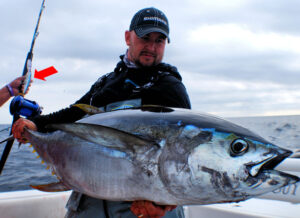
In addition to selecting the right lures and baits, trolling speed and depth are also important factors to consider when targeting tuna. For everyday marlin fishing with dead bait or lures, a speed of 8.5 knots is a good all-around speed. However, the ideal trolling speed for tuna can vary depending on factors such as water temperature and current. As for depth, tuna tend to swim at depths of 100-300 feet, so trolling at a depth of around 200 feet can be effective. By adjusting trolling speed and depth, anglers can increase their chances of enticing tuna to bite.
Fighting and landing tuna can be a challenging but rewarding experience. When a tuna is hooked, it is important to keep the line tight and the drag set properly to prevent the fish from breaking free. Tuna are strong swimmers and can put up a fierce fight, so it is important to have the necessary landing gear such as gaffs, tail ropes, leader gloves, and fighting belts. With the right techniques and equipment, anglers can successfully hook and land tuna while offshore trolling.
Trolling Techniques for Hooking MahiMahi
Mahi-Mahi, also known as dolphin fish, are a popular game fish among offshore anglers. To successfully catch Mahi-Mahi while trolling, selecting the right lures and baits is crucial. Using a combination of brightly colored lures and natural baits such as squid or ballyhoo can attract these fish to your trolling spread. Mahi-Mahi are known to be attracted to shiny and colorful lures, so incorporating lures with holographic finishes or skirts with bright colors can increase your chances of a successful catch. It is also important to rig your baits properly to ensure they swim naturally in the water and mimic the movement of live bait.
Trolling speed and depth are also important factors to consider when targeting Mahi-Mahi. These fish are known to swim near the surface, so trolling at a speed of around 6-8 knots can help keep your lures at the right depth. Additionally, incorporating weighted lines or sinker rigs can help keep your lures at the desired depth and increase your chances of hooking Mahi-Mahi. It is important to experiment with different trolling speeds and depths to find what works best for the specific conditions and location you are fishing in.
Fighting and landing Mahi-Mahi can be an exciting experience for anglers. These fish are known for their acrobatic jumps and aggressive fighting style when hooked. When reeling in a Mahi-Mahi, it is important to keep the line tight and maintain pressure on the fish to prevent it from shaking the hook out of its mouth. Once the fish is close to the boat, a gaff can be used to safely land the fish. Using a lighter baitcasting rig designed for saltwater fishing can provide a great fight when targeting Mahi-Mahi. By incorporating these trolling techniques and tactics, anglers can increase their chances of hooking Mahi-Mahi while offshore fishing.
Best Practices for Offshore Trolling
Offshore trolling is a popular method for catching a variety of gamefish, including marlin, tuna, and mahi-mahi. However, it is important to prioritize safety measures when engaging in this activity. Before heading out, it is essential to check weather conditions, ensure that all safety equipment is in good working condition, and have a plan in case of emergency. Additionally, all crew members should be knowledgeable about safety procedures and be prepared to act quickly in case of an emergency. By taking these precautions, offshore trolling can be a safe and enjoyable experience for all involved.
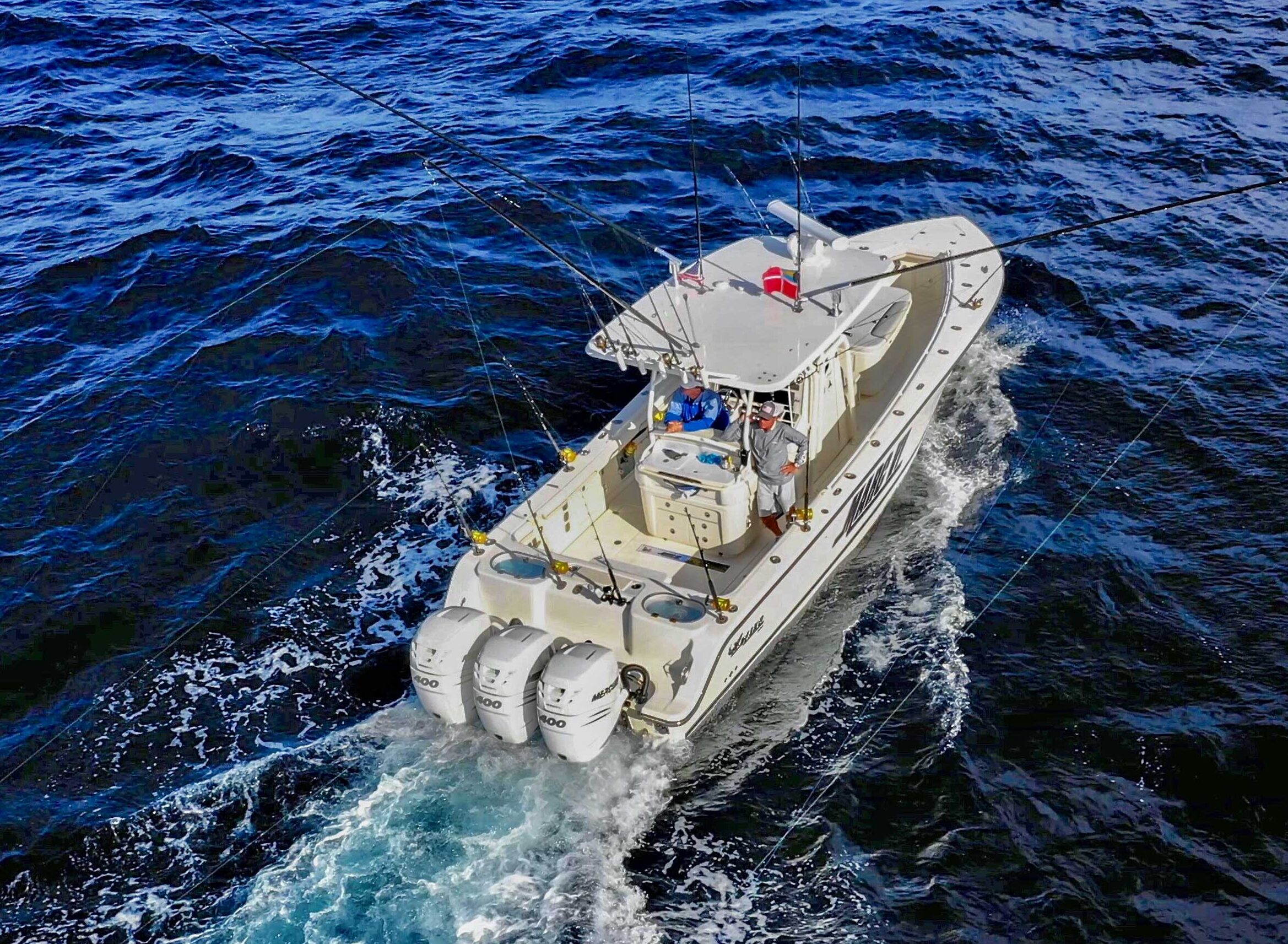
Proper equipment maintenance is also crucial for successful offshore trolling. Regularly checking and maintaining fishing lines, reels, and lures can prevent equipment failure and increase the chances of hooking a fish. It is also important to properly store and organize equipment to prevent damage and ensure that everything is easily accessible when needed. Following guidelines for deploying baits in different situations can also improve the chances of a successful catch. By prioritizing equipment maintenance and organization, offshore trolling can be a more efficient and enjoyable experience.
Ethical considerations should also be taken into account when engaging in offshore trolling. This includes using proper techniques and equipment to avoid unnecessary harm to the fish, as well as following local regulations and guidelines for catch limits. Additionally, it is important to properly dispose of any waste or debris generated during the trip to minimize environmental impact. By practicing responsible and ethical offshore trolling, anglers can contribute to the preservation of marine ecosystems and ensure that future generations can enjoy this activity.
